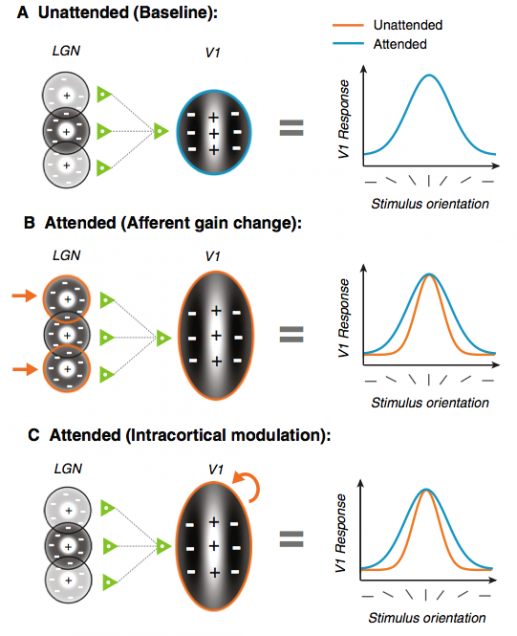A review of the mechanisms by which attentional feedback shapes visual selectivity
Brain, Structure & Function (In Press)
Sam Ling, Janneke Jehee & Franco Pestilli
The glut of information available for the brain to process at any given moment necessitates an efficient attentional system that can ‘pick and choose’ what information receives prioritized processing. A growing body of work, spanning numerous methodologies and species, reveals that one powerful way in which attending to an item separates the wheat from the chaff is by altering a basic response property in the brain: neuronal selectivity. Selectivity is a cornerstone response property, largely dictating our ability to represent and interact with the environment. Although it is likely that selectivity is altered throughout many brain areas, here we focus on how directing attention to an item affects selectivity in the visual system, where this response property is generally more well characterized. First, we review the neural architecture supporting selectivity, and then discuss the various changes that could occur in selectivity for an attended item. In a survey of the literature, spanning neurophysiology, neuroimaging and psychophysics, we reveal that there is general convergence regarding the manner with which selectivity is shaped by attentional feedback. In a nutshell, the literature suggests that the type of changes in selectivity that manifest appears to depend on the type of attention being deployed: whereas directing spatial attention towards an item only alters spatial selectivity, directing feature-based attention can alter the selectivity of attended features.


